Exhibit
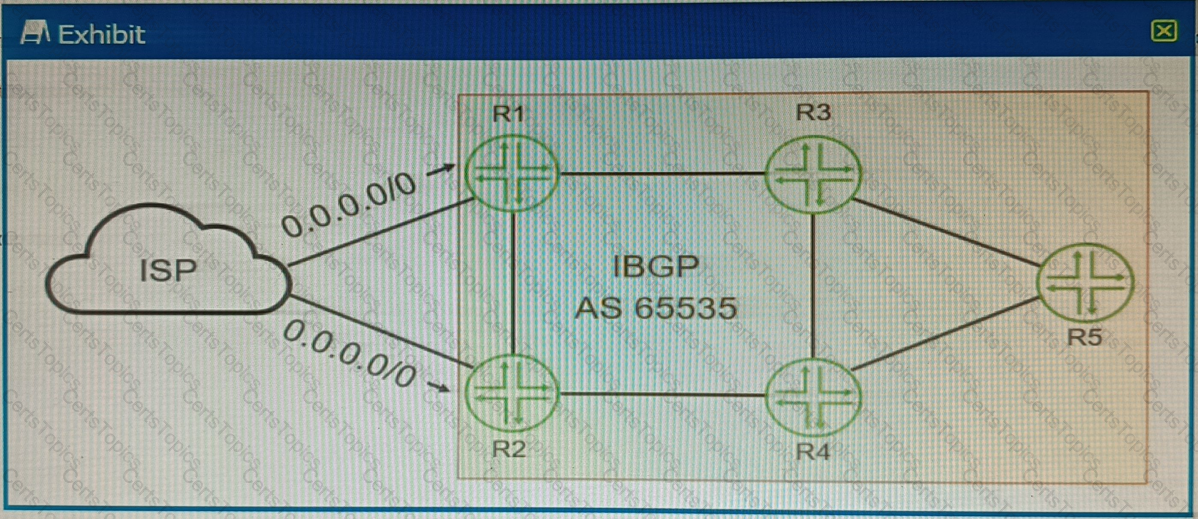
Your ISP is announcing a default route to both R1 and R2. You want your network routers to forward all Internet traffic through the R1 device
Which BGP attribute would you use?
Which two statements about BGP facilitate the prevention of routing loops between two autonomous systems? (Choose two.)
Exhibit
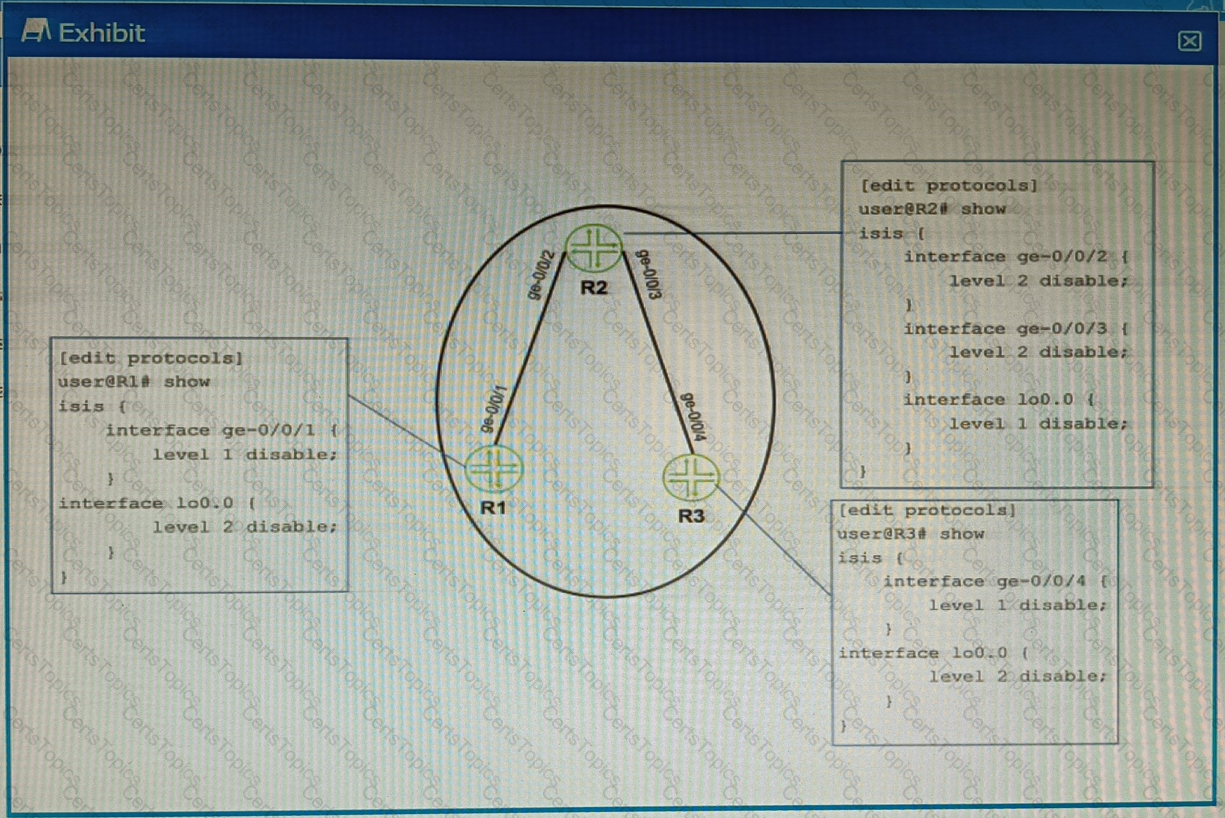
Referring to the exhibit, which two configuration changes must you apply for packets to reach from R1 to R3 using IS-IS? (Choose two.)
You are a network operator who wants to add a second ISP connection and remove the default route to the existing ISP You decide to deploy the BGP protocol in the network.
What two statements are correct in this scenario? (Choose two.)
Exhibit.
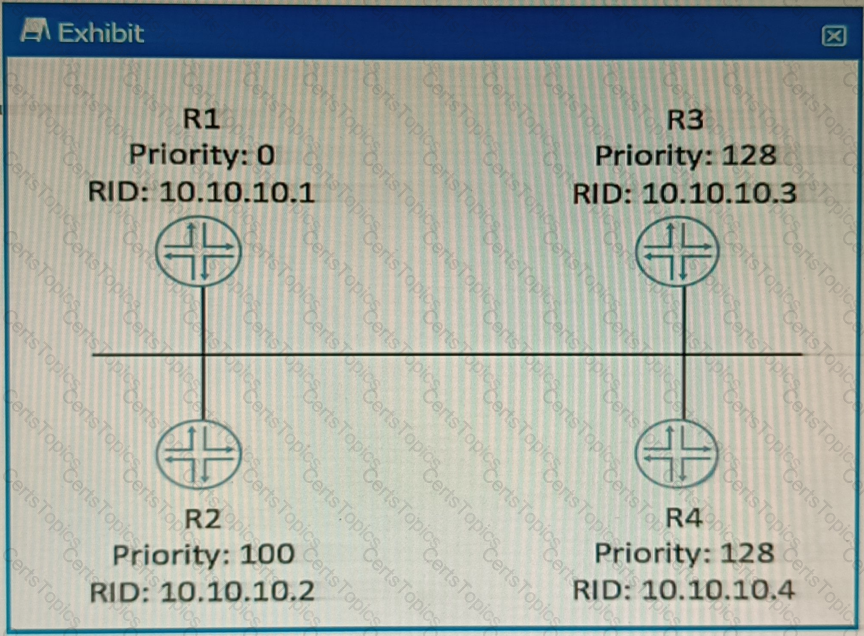
Which router will become the OSPF BDR if all routers are powered on at the same time?
Which two statements about redundant trunk groups on EX Series switches are correct? (Choose two.)
Which two statements are correct about tunnels? (Choose two.)
What is the default MAC age-out timer on an EX Series switch?
A new network requires multiple topology support. You decide to use IS-IS in this situation. Which three protocol topologies are supported in this scenario? (Choose three.)
Which two types of tunnels are able to be created on all Junos devices? (Choose two.)
Which two events cause a router to advertise a connected network to OSPF neighbors? (Choose two.)
Which statement is correct about IP-IP tunnels?
Exhibit
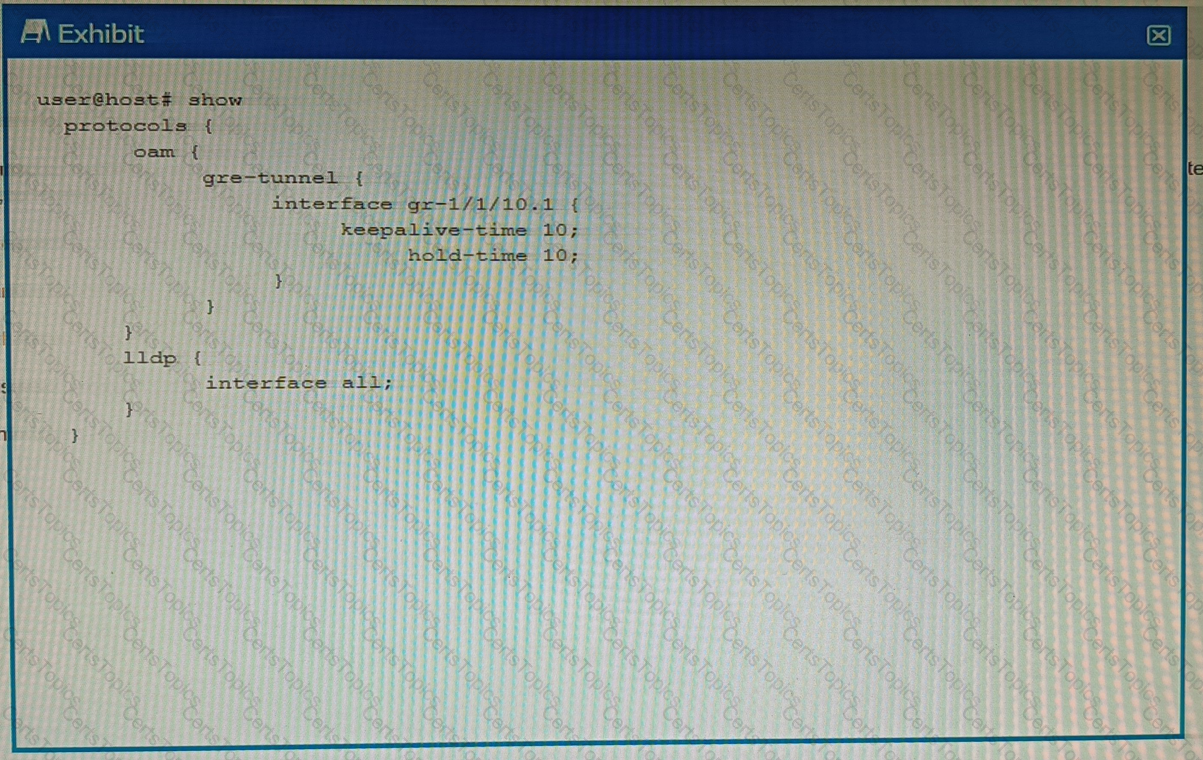
You have configured a GRE tunnel. To reduce the risk of dropping traffic, you have configured a keepalive OAM probe to monitor the state of the tunnel; however, traffic drops are still occurring.
Referring to the exhibit, what is the problem?
Which statement is correct about graceful Routing Engine switchover (GRES)?
What is a purpose of using a spanning tree protocol?
In RSTP, which three port roles are associated with the discarding state? (Choose three.)
Exhibit
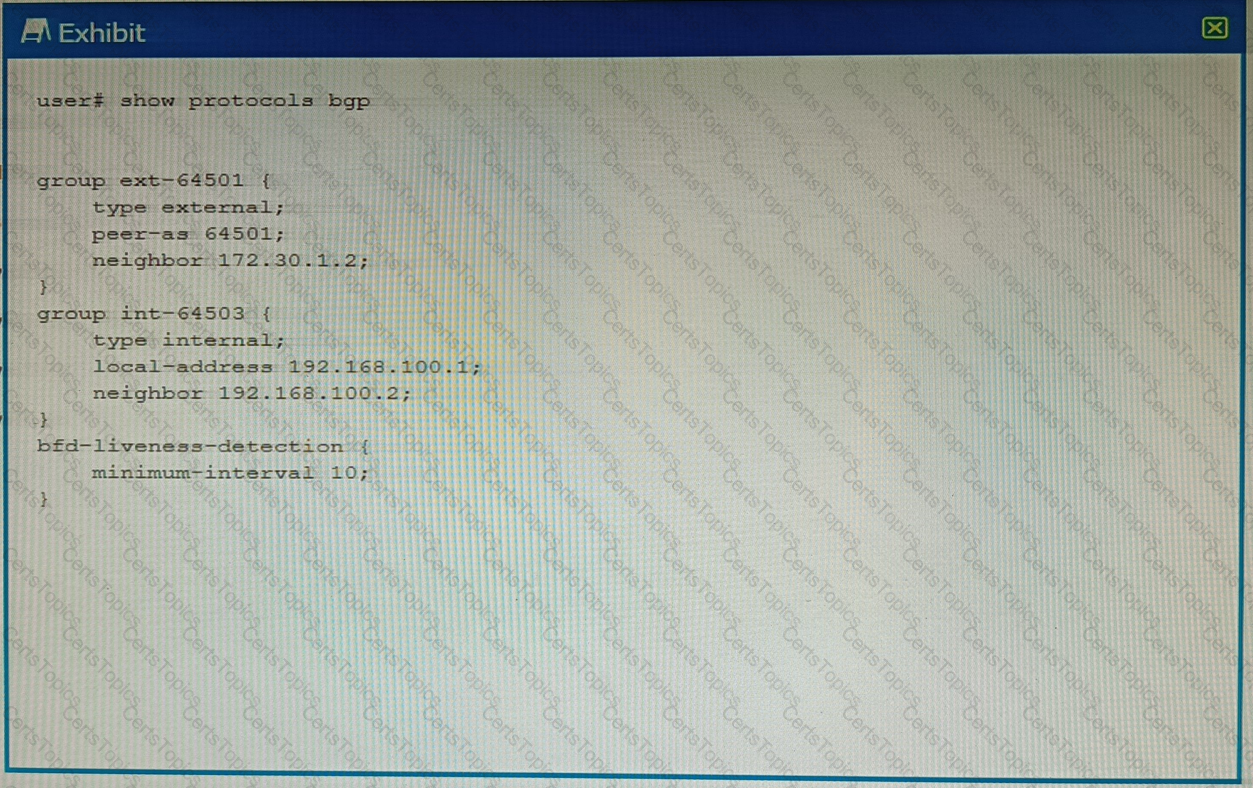
Your BGP neighbors, one in the USA and one in France, are not establishing a connection with each other.
Referring to the exhibit, which statement is correct?
You want to use filter-based forwarding (FBF) on your Internet peering router to load-balance traffic to two directly connected ISPs based on the source address.
Which two statements are correct in this scenario? (Choose two.)
You are receiving multiple BGP routes from an upstream neighbor and only want to advertise a single summarized prefix to your internal OSPF neighbors. This route should only be advertised when you are receiving these BGP routes from this neighbor.
In this scenario, which type of route should you create?